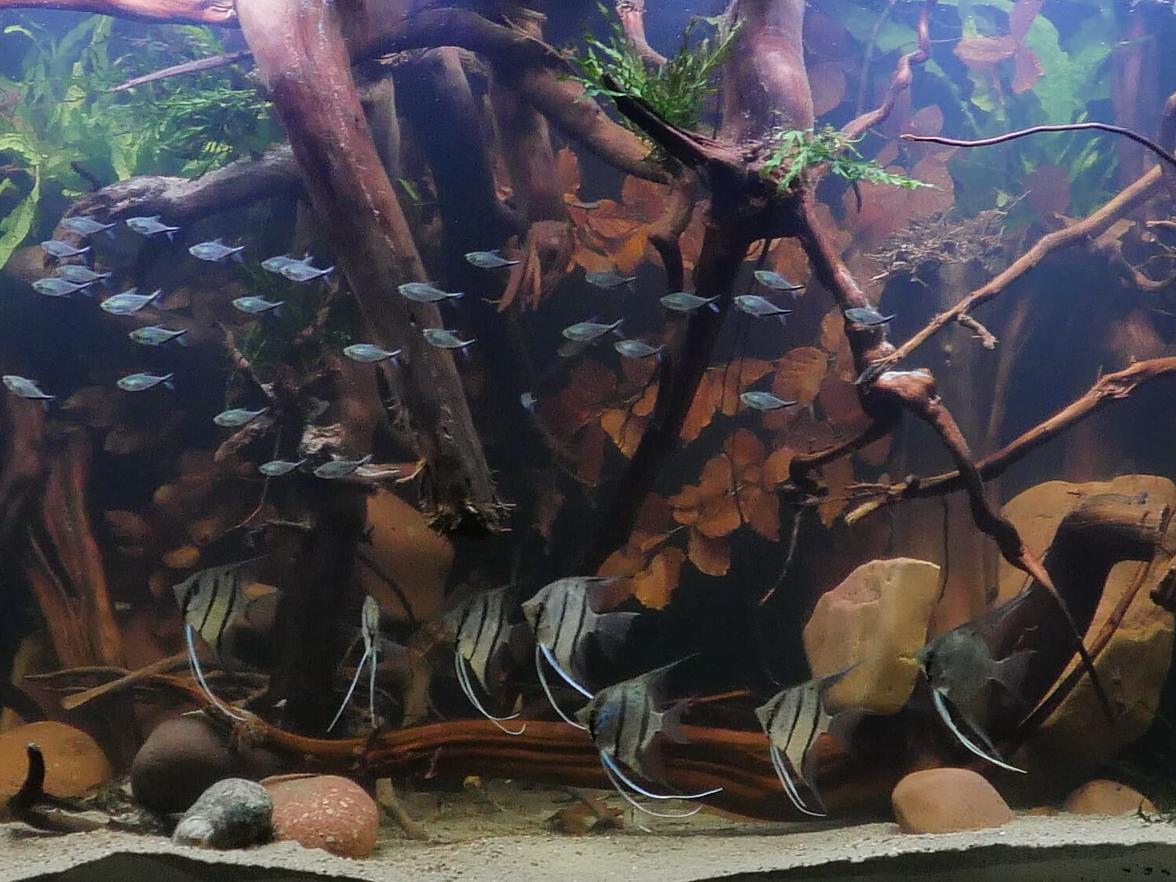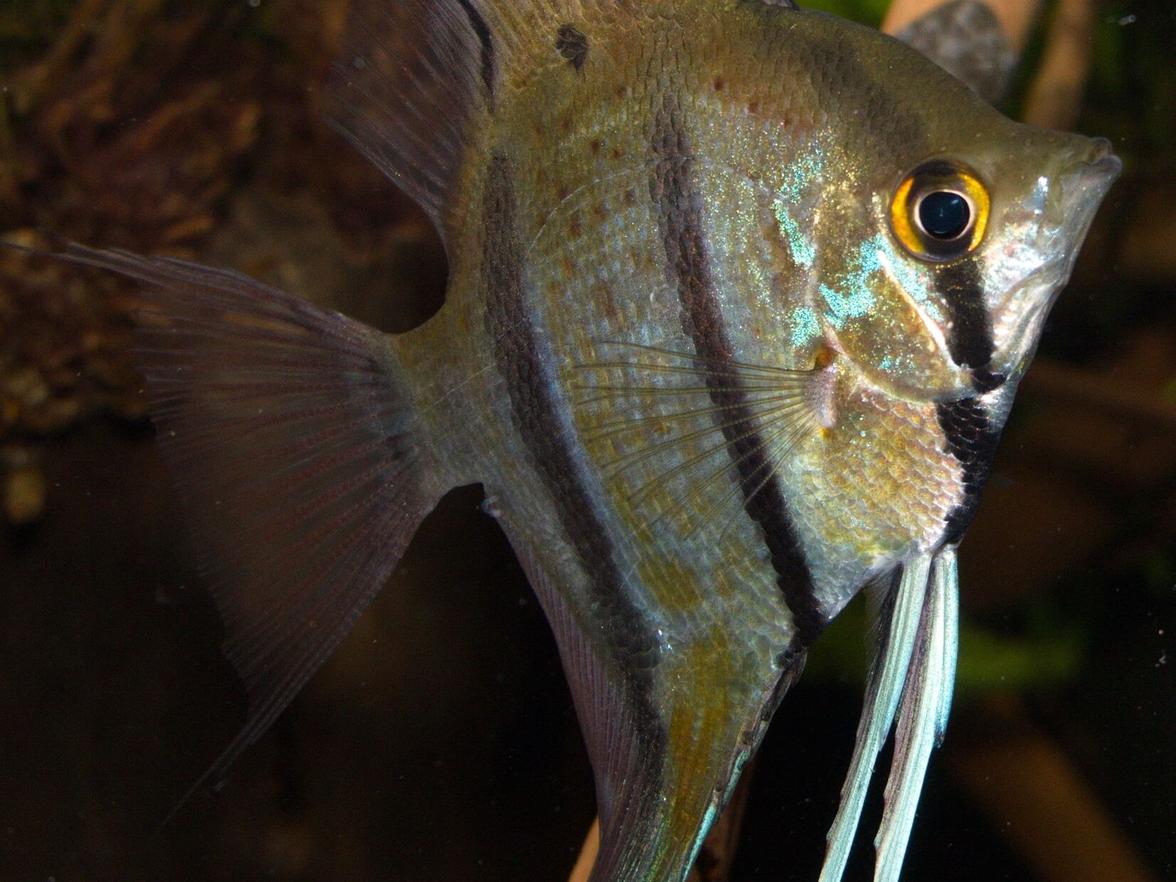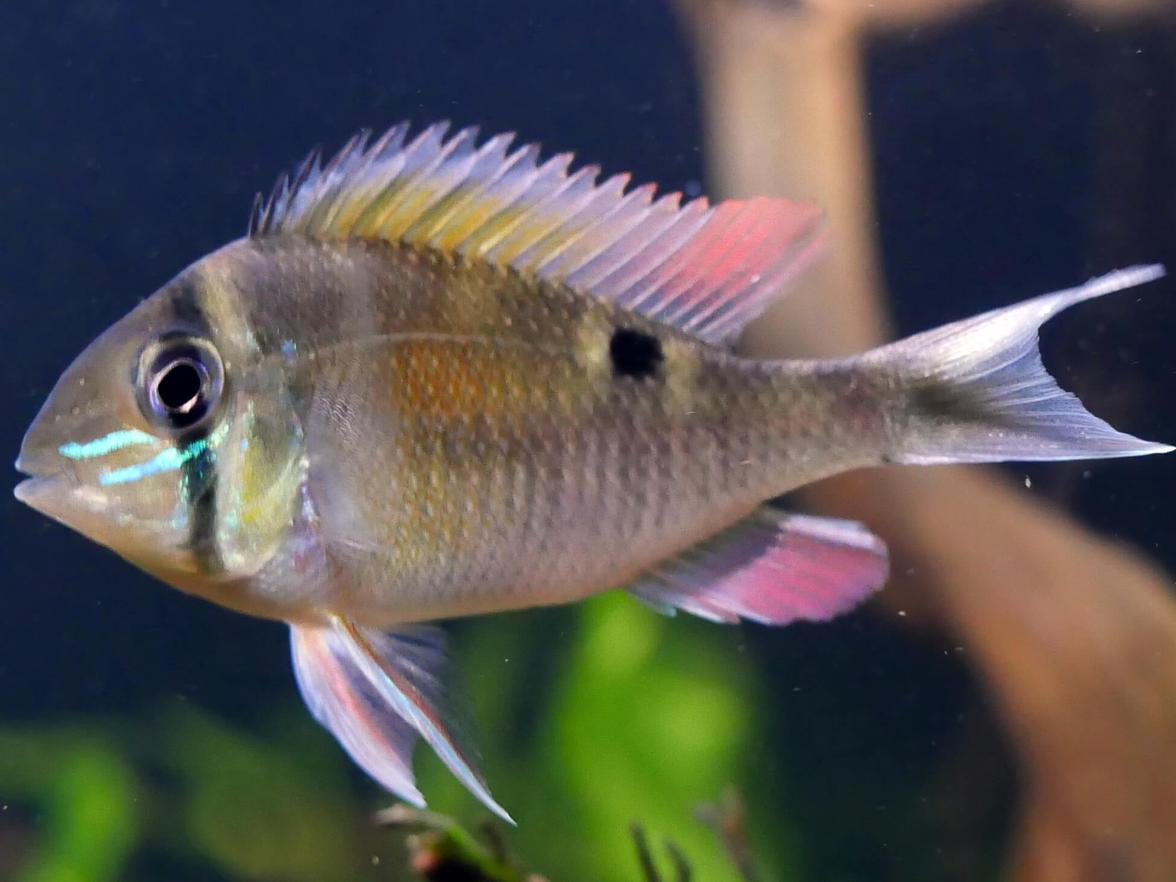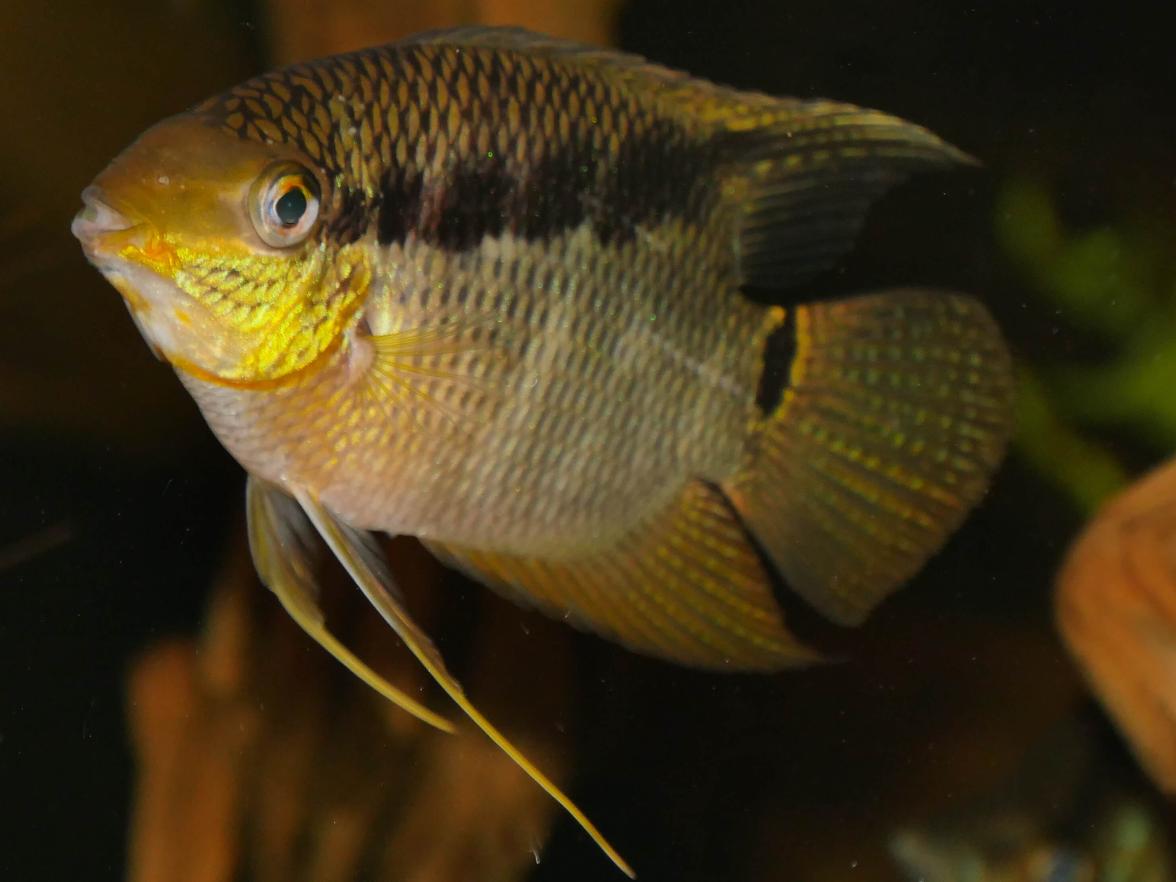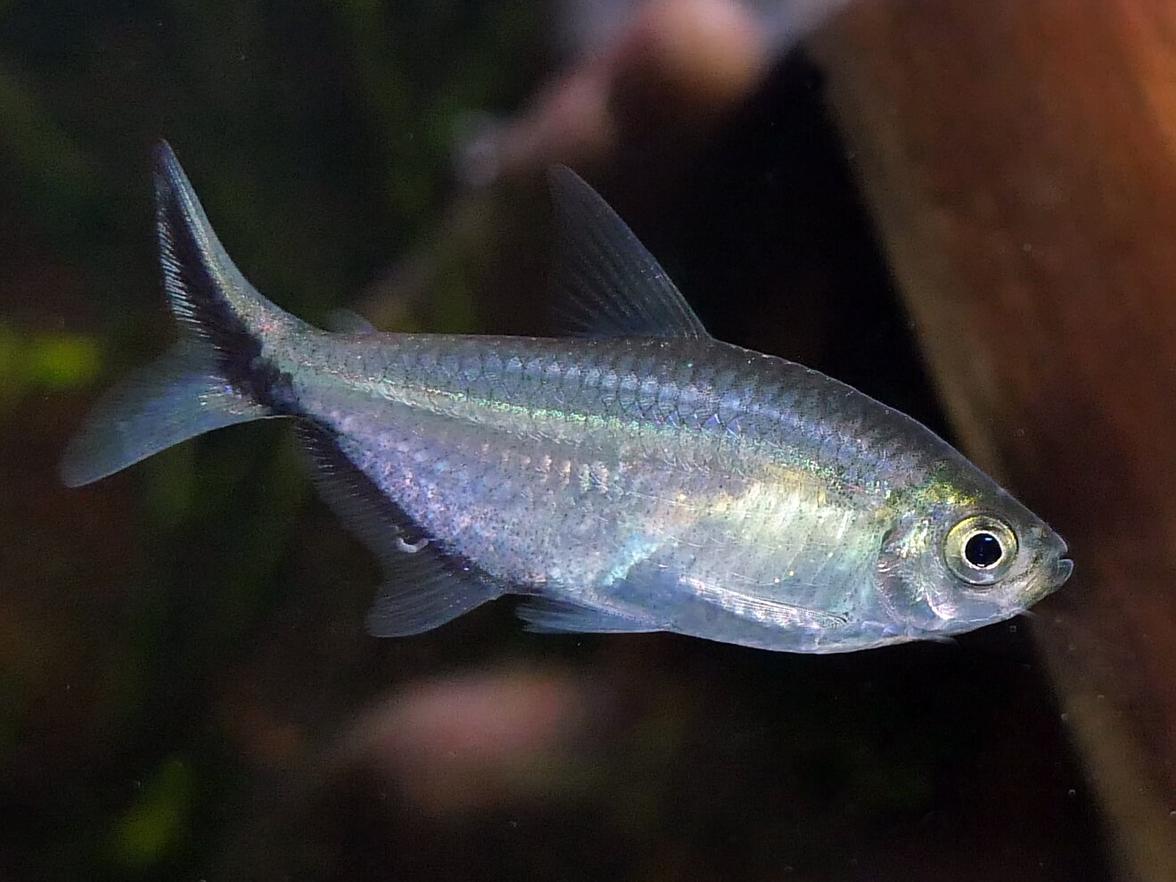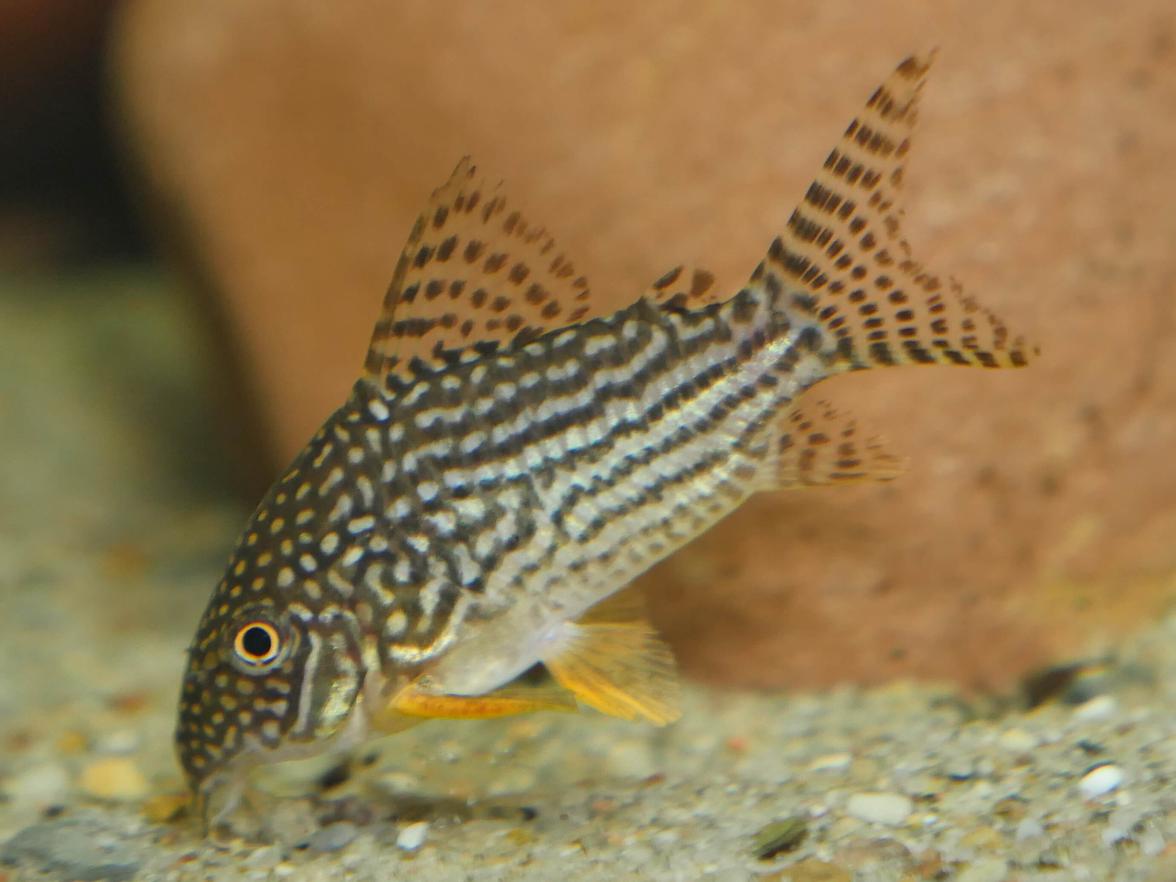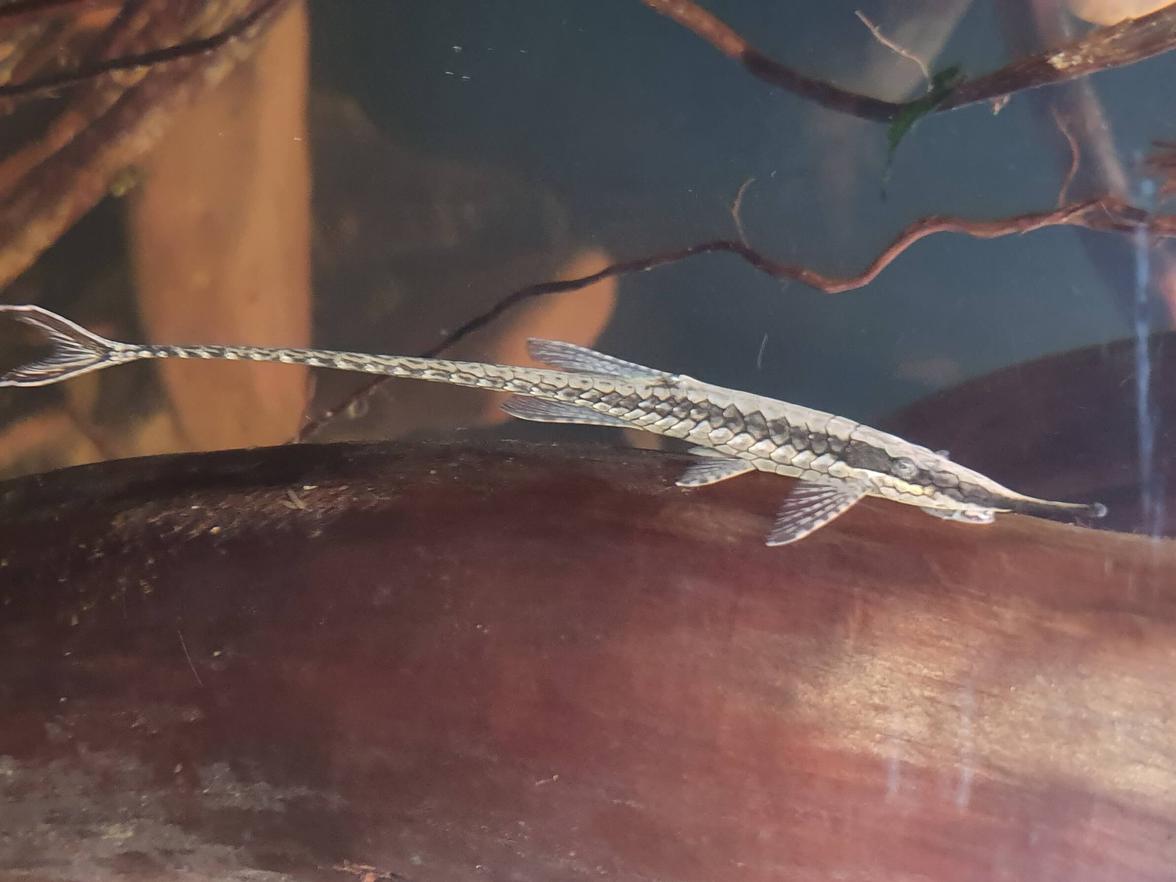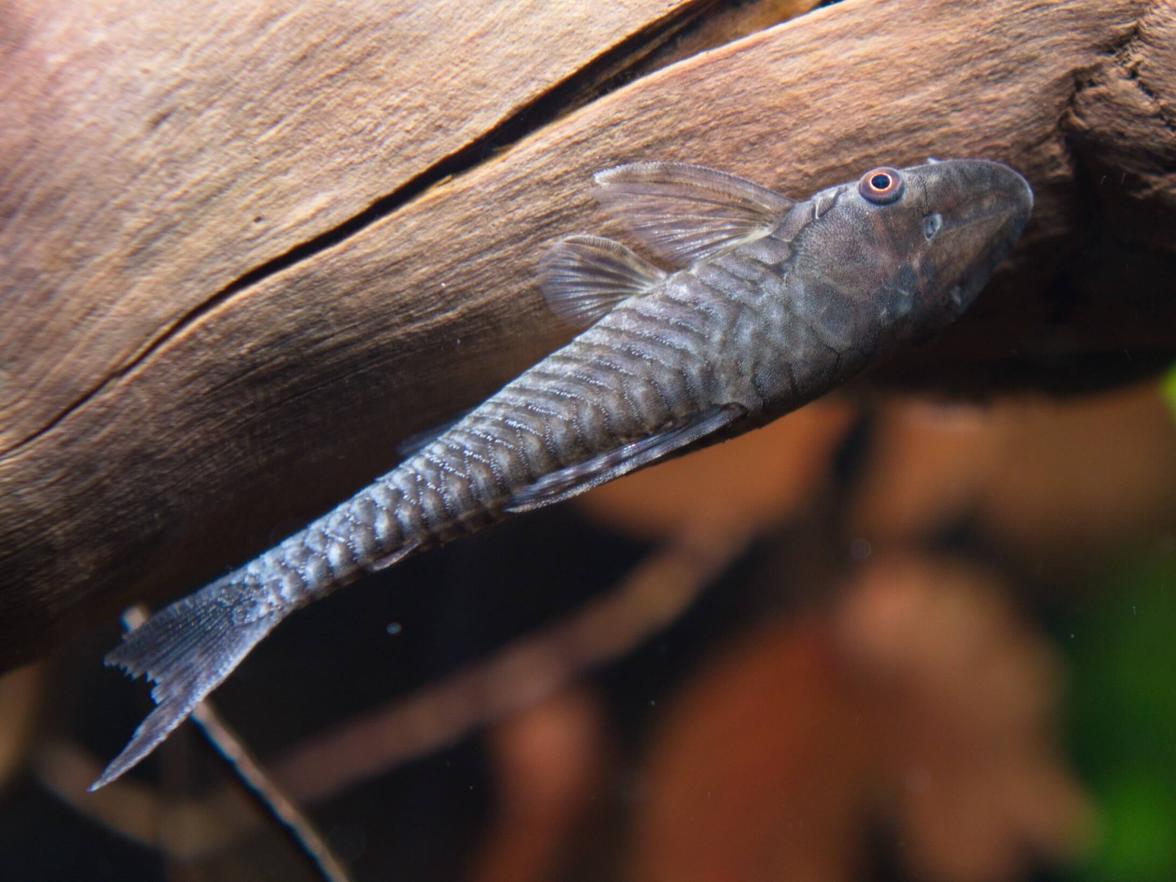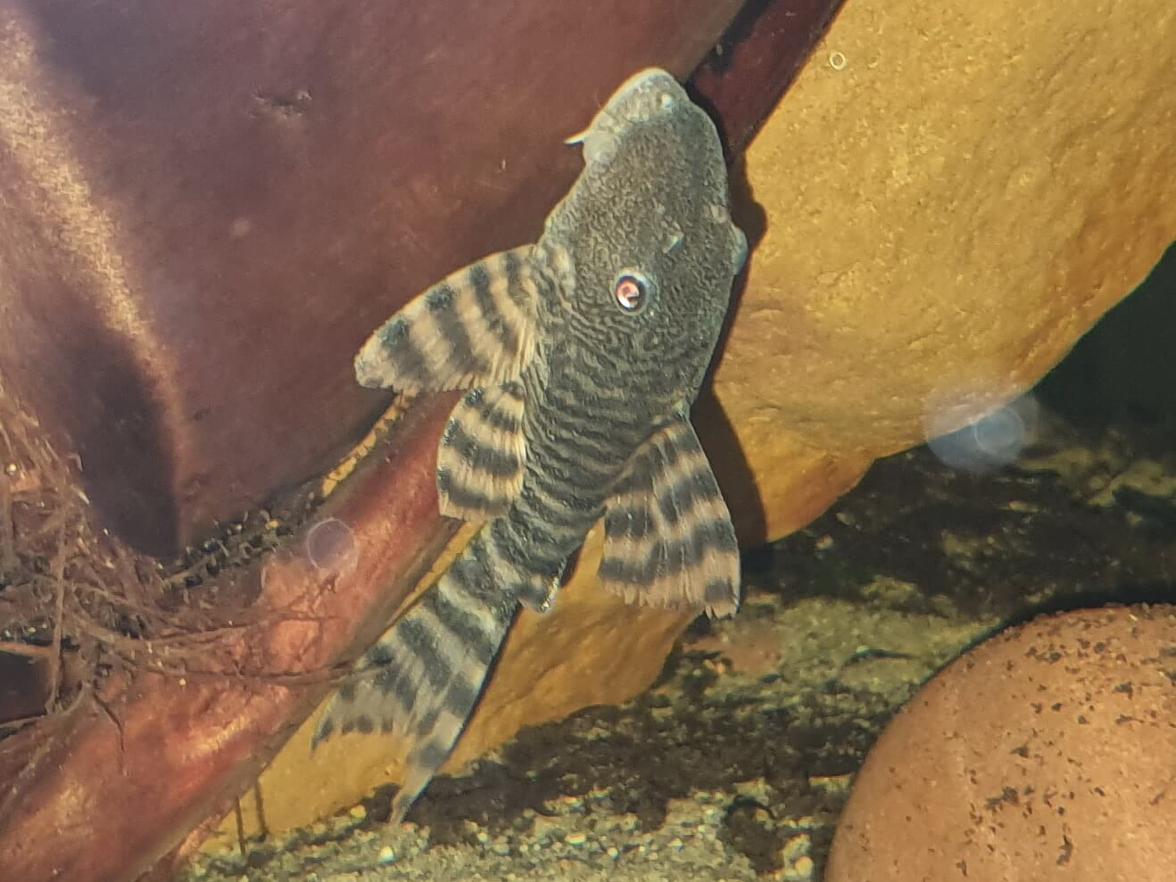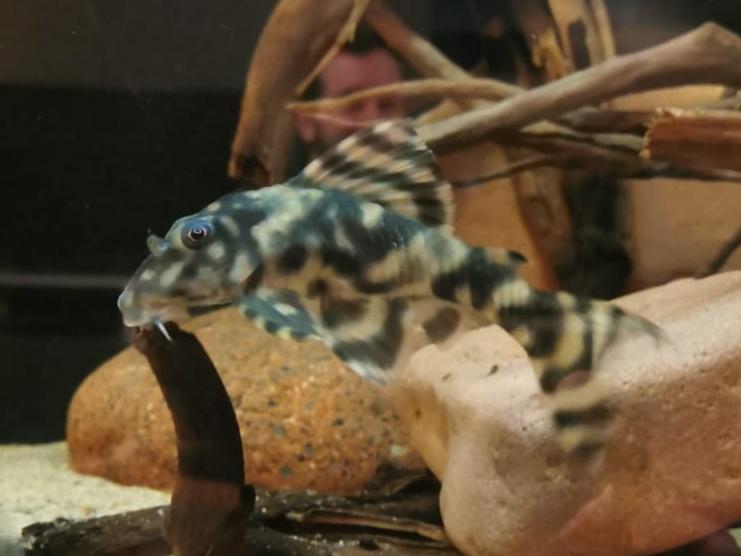How to create a dark, natural underwater landscape with giant roots, beech leaves, and minimal technology? What challenges await us when imitating a natural environment and when carefully selecting the livestock?
Setting up a biotope aquarium – is that even possible?
When you look at pictures and videos from the natural habitats of the cichlids or perhaps you have had the opportunity to dive or snorkel in their living environments yourself, it quickly becomes clear that any attempt to recreate such a biotope in the limited space of a glass box can only be a rough approximation of reality.
During a visit to the fish dealer I trust, I discovered beautifully colored, long-finned wild Peru Altum angelfish from the Rio Nanay in Peru and was immediately excited about the animals. And off we went to plan a tank for the angelfish. It was ordered at 80 cm in height, 150 cm in width and 60 cm in depth and, a short time later, due to the weight (15 mm glass!), glued on site.
Tank furnishing
Large Moorkien roots were cleaned with a pressure washer and soaked for several weeks in rain barrels. Some roots hang from above into the tank, others stand on the floor and reach up to the water surface.
A few brown sandstone nodules (Solling sandstone) from a gravel pit on the Weser as territorial boundaries for the Biotodoma. Also beech and oak branches with dry leaves, which you can find in the forest all year round and which are exchanged every 2 weeks. Beech and oak leaves as well as a few Seemandelbaum leaves on the ground
Substrate: washed play sand 0-2 mm and a top layer consisting of a mixture of Weser sand and fine gravel up to about 10 mm.
Aquarium plants: not entirely biotope-appropriate: a few epiphytes, Bolbitis heudelotii and Microsorum pteropus, tied to the roots in the upper third of the tank.
Substrate: washed play sand 0-2 mm and a top layer consisting of a mixture of Weser sand and fine gravel up to about 10 mm.
Aquarium plants: not entirely biotope-appropriate: a few epiphytic plants, Bolbitis heudelotii and Microsorum pteropus, tied to the roots in the upper third of the tank.
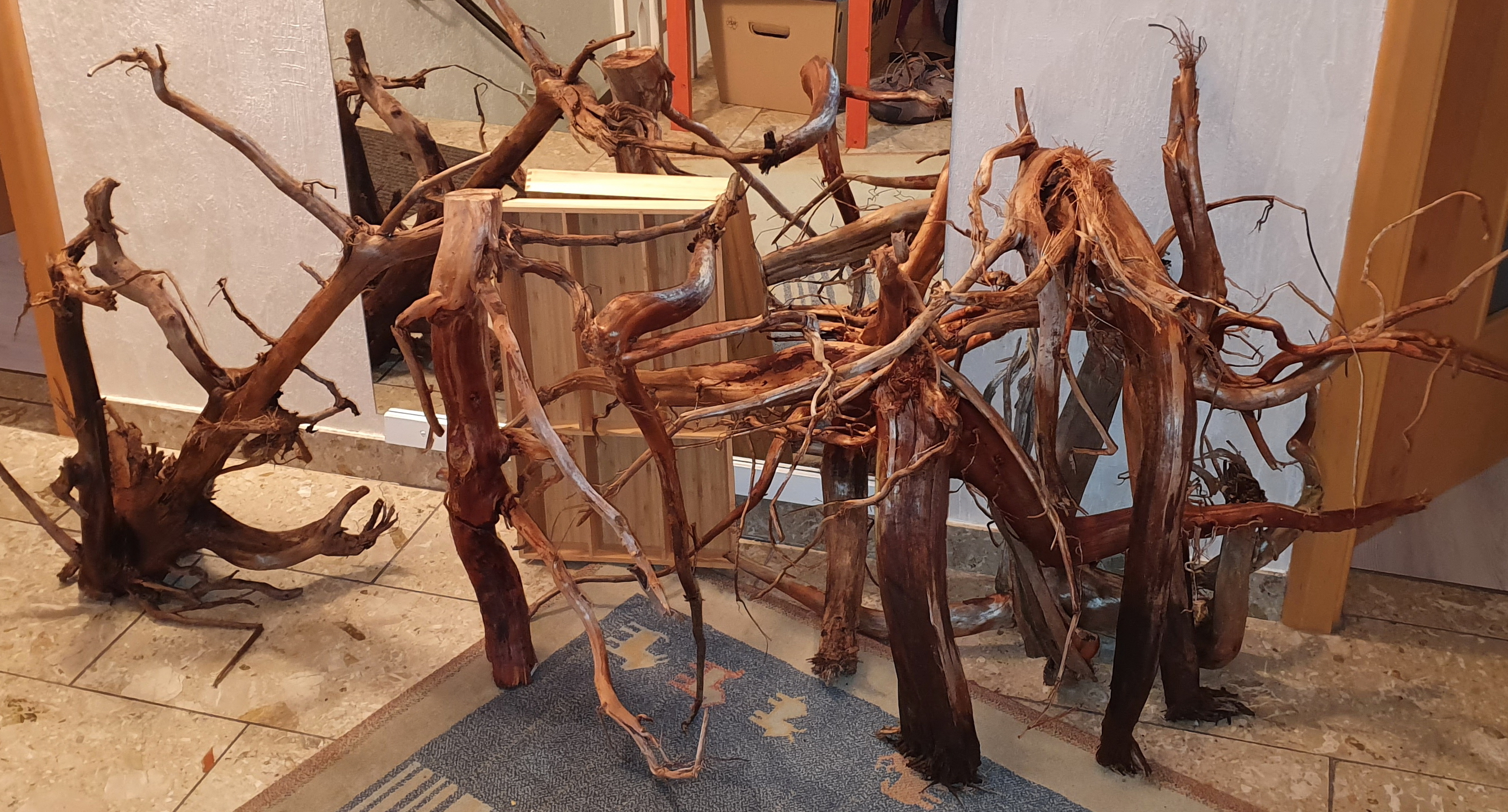
Fig. 1: Large Moorkien roots, high-pressure cleaned and rinsed. Hard to believe, but they were all used.
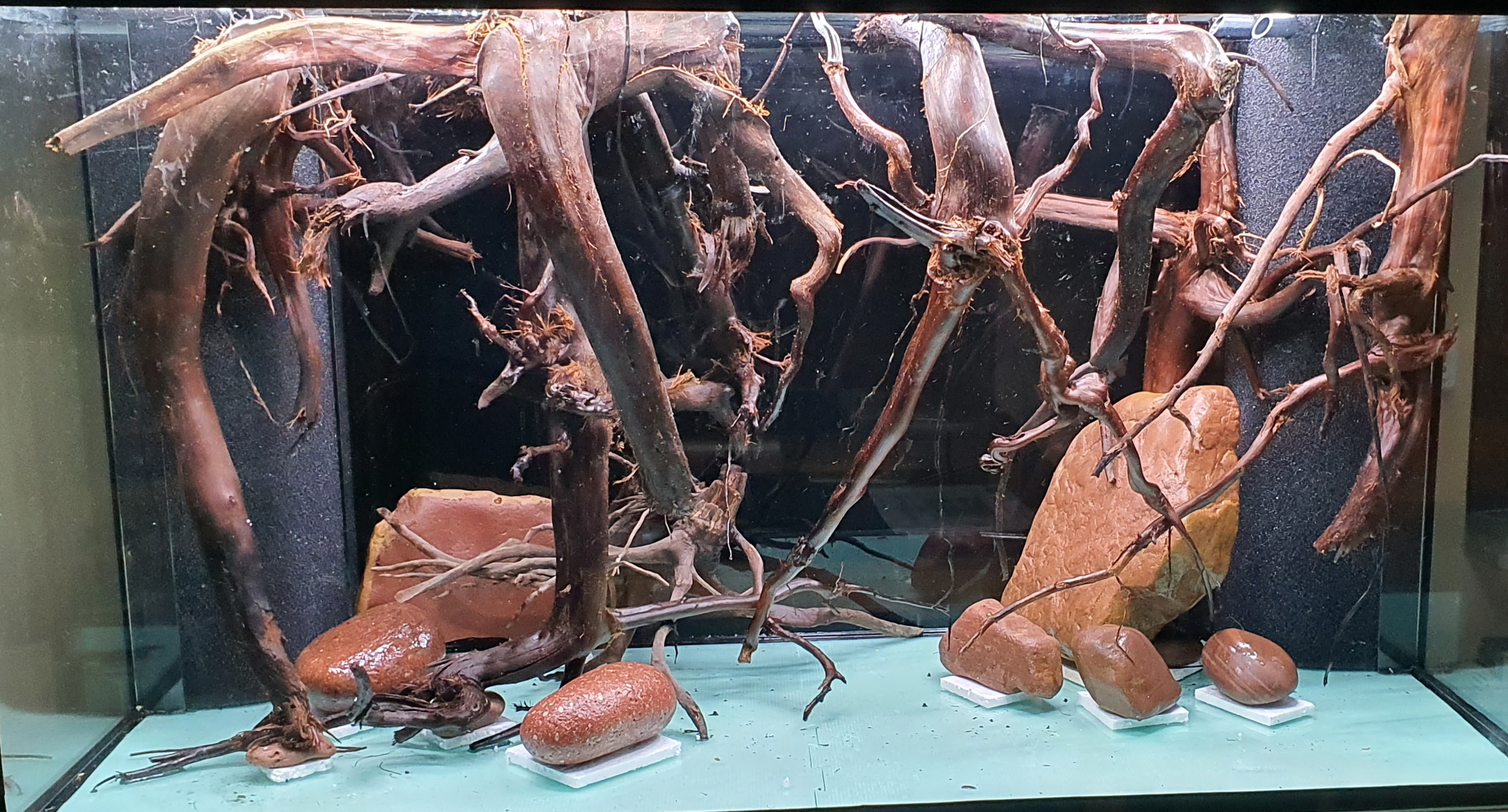
Fig. 2: And this is how the hardscape looked. Most of the roots hang, attached with cable ties to horizontally lying square-profile beams, from above into the tank.
Techniques:
Lighting: sparse with LED lights, which are separately controlled via 3 LED digital dimmers.
Filtration: Over 2 HMF in the corners from 4 cm thick black mats with 20 ppi. Area each 0.25 m2. 2 air lifters from GN with a 25 mm outer diameter. Powered by an aquaforte V30 in the side room. In the initial phase of the mats, they were supported by a running EHEIM professional 4+ 600 from another tank.
Other equipment: There is nothing more; the tank should be operated with minimal equipment. Incorrect: two heater rods of 300W sit behind the HMF.
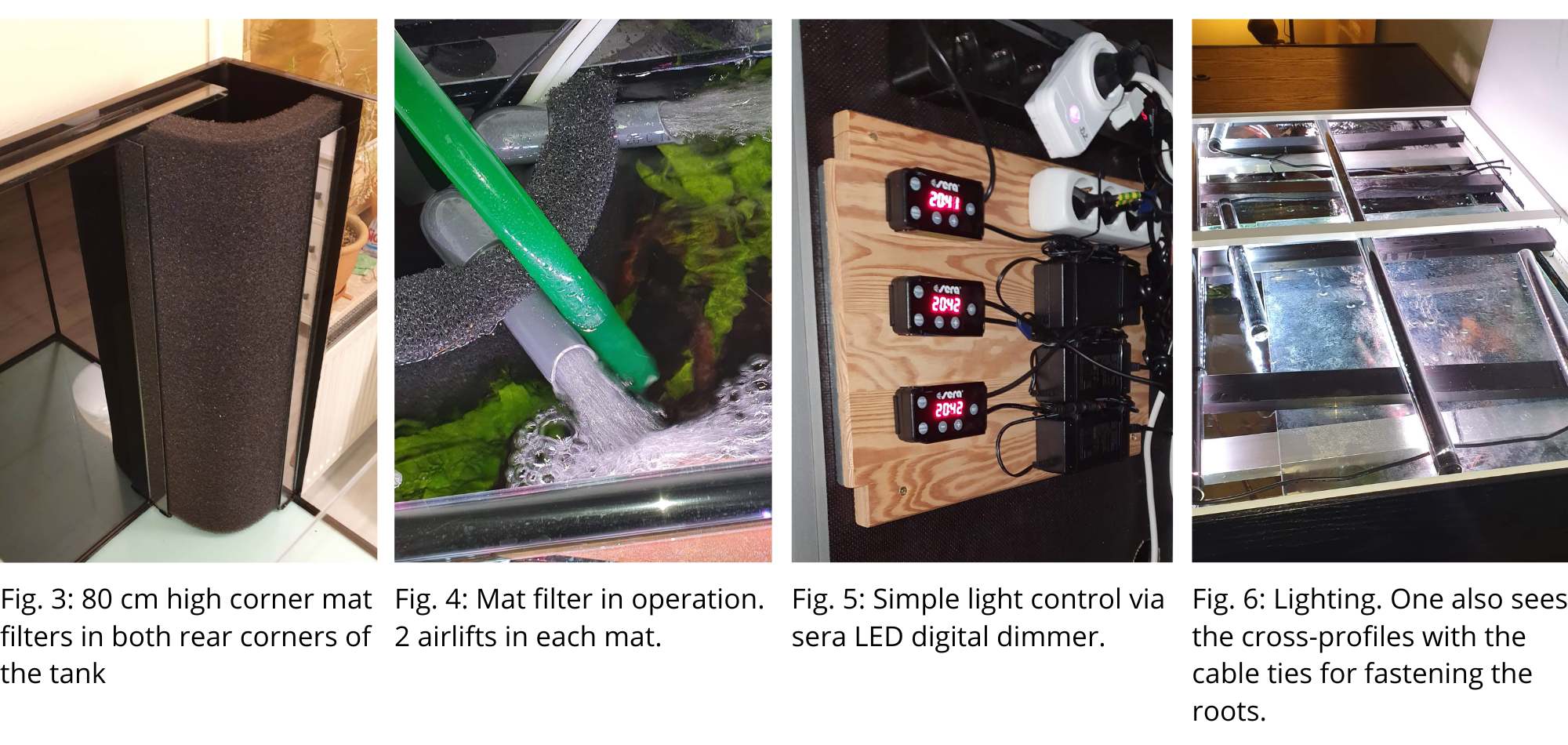
Water: I live on the edge of a small mountain range of sandstone (Solling), so the water from the tap is quite soft here with a KH of 4° dH and GH of 7° dH, but—as is typical for tap water—in a pH above 7.
Therefore the water changes are prepared in a large, 300-liter rain barrel in the basement: it is tempered and aerated, slightly acidified with peat granules and alder cones in a bag hung inside, so that it has a pH
Here are two more pictures of the fully set up and running tank:
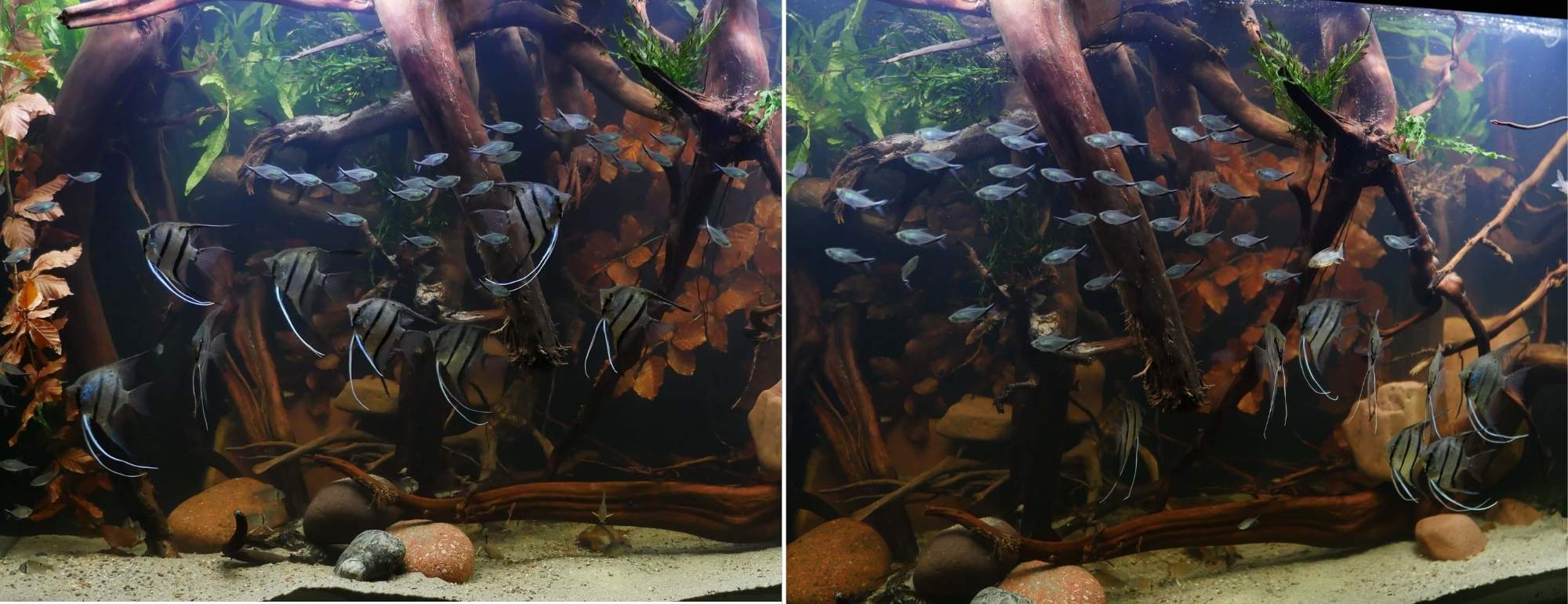
Fig. 7 & 8: Two views of the tank. Due to the humic substances in the water and the sparse lighting, a somewhat gloomy atmosphere arises, which in my romantic imagination (I have never been there) resembles a riverbank shaded by trees along the Rio Nanay and imitates the lighting conditions there. Therefore no attempt was made to plant the bottom, but only a few epiphytes bound to the roots in the upper 30 cm. A decorative element are also the dry beech and oak branches, which in the biotope are to picture hanging, leaved branches.
Stocking:
Cichlids:
- 8 red-spotted 'Peru Altum' wild specimens, Pterophyllum scalare from the Rio Nanay. These are not “true” Altum angelfish (Pterophyllum altum) but rather, with about 20 cm fin span, rather small but very attractively colored angelfish
- 8 tail-striped cichlids, Biotodoma cupido wild-caught from the Rio Nanay.
- 6 young flag cichlids, Mesonauta insignis F1.
Characins:
- A school of 40 “Black-lined” whitesarver, Moenckhausia costae, which suited the rest of the stocking, the furnishings, and the gloomy atmosphere of the tank.
- A small school of black phantom tetras, Hyphessobrycon megalopterus, which were hardly visible as they almost exclusively danced through the dry leaves on the back of the tank.
Catfish should of course not be missing with all that wood:
- 15 Hoplisoma (Corydoras) sterbai wild-caught for the sandy substrate
- 4 Farlowella acus
- 4 Hypoptopoma gulare WF
- 3 pieces of wood-eating L397 Panaqolus sp. & L226 Panaqolus changae
However, after a few weeks I released the Panaqolus again. They pooped like forest donkeys and the mat filters clogged very quickly.
Food plan
Frozen food (from the Aqua-Farm Rein) in a mix of Artemia, white and black mosquito larvae. In addition, high-quality flake and granule food.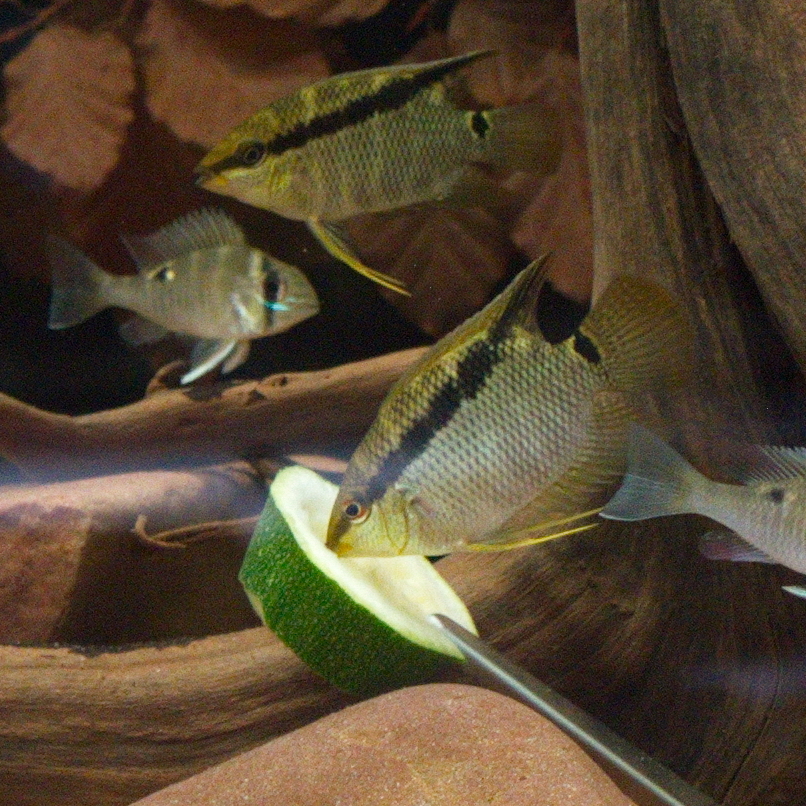
Fig. 18: Mesonauta as a vegetarian
The catfish were regularly given vegetables: alternating cucumber, zucchini and bell pepper.
I was somewhat surprised that the Mesonauta eagerly nibbled on the vegetarian fare as well. However, not really surprising, as in their homeland during flood times they surely also have fruit and other greens on their menu.
